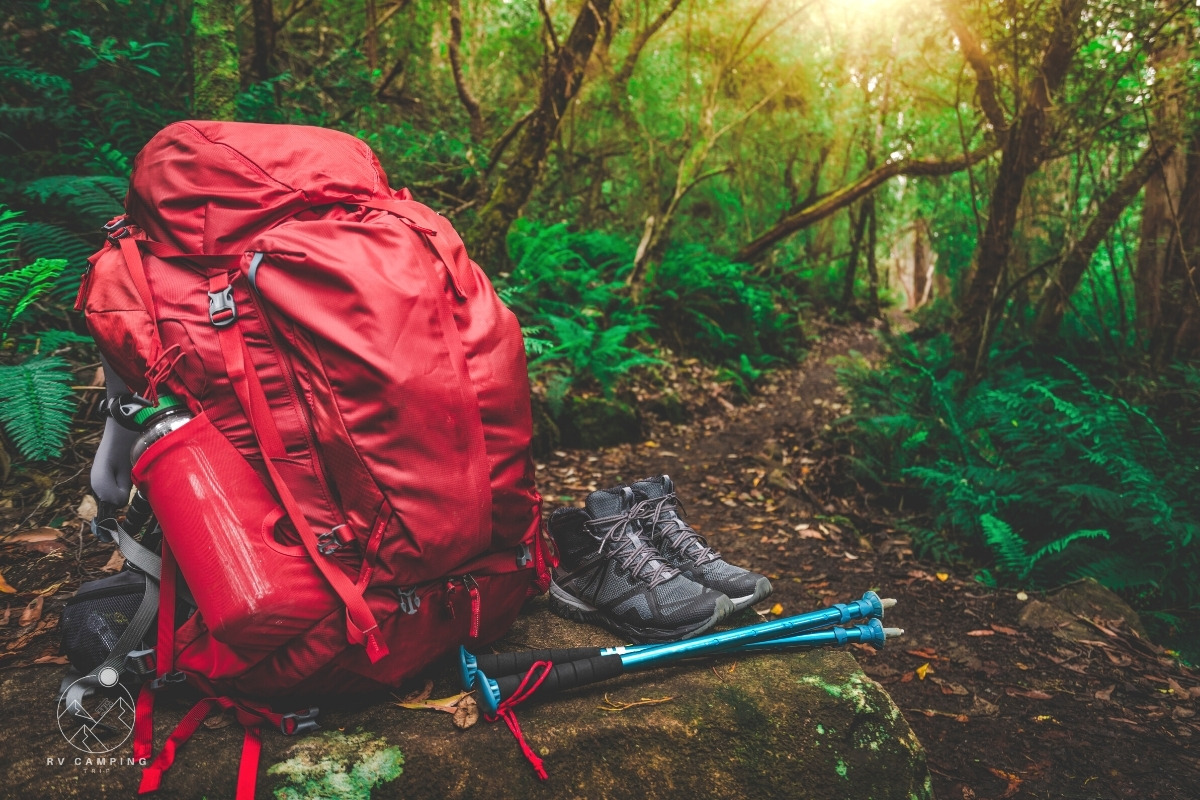In the wild, anything can happen. That’s why it’s important to be prepared for anything when venturing into the great outdoors. Whether you’re planning a day hike or a week-long camping trip, there are certain backcountry gear essentials that you need to bring with you in order to survive.
From shelter and clothing to food and water, here are the ten absolute backcountry gear essentials that every hiker should have before embarking on their next adventure.1. Know your limits and plan accordingly
In any wilderness situation, it is important to know your limits and plan accordingly. This may seem like common sense, but it is often overlooked in the excitement of the moment. If you are not used to hiking long distances, don’t try to go too far on your first day out.
Start with shorter hikes and work your way up. Likewise, if you are not used to camping in the cold, don’t try to camp in the snow. Make sure you have the proper gear and know how to use it before you venture into more challenging conditions. By knowing your limits and planning accordingly, you can avoid dangerous situations and have a more enjoyable wilderness experience.

2. Dress in layers
One of the most important things to remember when venturing into the backcountry is to dress in layers. The key to staying warm is to trap your body heat, and layers of clothing help to do just that. Furthermore, you can always take a layer off if you get too warm, but you can’t put one on if you didn’t bring it. Ideally, you should have three layers of clothing: a base layer, an insulation layer, and a weatherproof layer.
The base layer should be made of a material that wicks away sweat, like wool or synthetic fabric. The insulation layer should be something that will keep you warm even when wet, like down or synthetic insulation. The weatherproof layer should be something that will protect you from the elements, like a waterproof jacket or shell. Of course, you will also need to dress for the conditions.
If it is cold and snowy, you will need to make sure that your clothing is adequate to protect you from the elements. In general, it is better to err on the side of caution and to dress too warmly than to dress too lightly. Lastly, remember that your feet are just as important as the rest of your body when it comes to staying warm. Make sure to wear socks that fit well and that are made of a material that will wick away sweat. And don’t forget to pack a pair of sturdy, waterproof boots.
[azonpress template=”grid” asin=””]3. Have the proper footwear
In order to have a successful and safe backcountry experience, it is important to have the proper footwear. This means footwear that is comfortable, waterproof, and well-fitting.
One of the most important things to consider when choosing footwear is comfort. You will be doing a lot of walking, and if your shoes are not comfortable, you will be miserable. Make sure to try on shoes before you buy them, and wear them around the house to make sure they don’t give you blisters.
Waterproof shoes are also a must in the backcountry gear essentials. Your feet will inevitably get wet, whether from rain, snow, or crossing streams. Waterproof shoes will help keep your feet warm and dry, and will also prevent blisters.
Fit is also important when it comes to footwear. Shoes that are too big can cause blisters, and shoes that are too small will be uncomfortable. Make sure your shoes have a snug, comfortable fit.
By following these guidelines, you can be sure to have the proper footwear for a safe and successful backcountry experience.

4. Bring a map and compass
When you’re heading into the backcountry gear, it’s essential to bring a map and compass. With these tools, you can navigate your way safely through any terrain.
A map will allow you to see the lay of the land and plan your route accordingly. If you’re unfamiliar with the area, it’s especially important to have a map so that you don’t get lost. Even if you think you know the area well, a map can be a valuable tool for finding your way around.
A compass will ensure that you stay on course even if there are no landmarks to guide you. It’s also a good idea to know how to use a compass before you head out, as it can be tricky to read in the wilderness.
With a map and compass, you’ll be prepared for anything the backcountry throws your way.
5. Pack a first-aid kit is a must Backcountry essentials gear
A first-aid kit is one of the most important things you can bring with you when venturing into the backcountry. At the very least, your first-aid kit should include items to treat minor cuts and scrapes, and more serious conditions such as severe bleeding, broken bones, and burns.
Bandages and dressings are essential for minor injuries, but you should also pack supplies for more serious wounds. Include gauze pads and rolls, medical tape, and sterile gloves. For severe bleeding, pack items such as an emergency pressure bandage and a tourniquet.
Broken bones are a real possibility when hiking and camping, so it’s important to have a splint in your first-aid kit. A SAM splint is a good option because it can be used for multiple purposes, such as splinting a broken bone or immobilizing a sprained joint.
Burns can easily happen when you’re cooking over a campfire or using a portable stove. Pack aloe vera gel to soothe minor burns, and a sterile burn dressing for more serious burns.
Include any prescription medications you take, as well as over-the-counter drugs such as ibuprofen and antihistamines. It’s also a good idea to pack a sting relief medication in case you’re bitten by insects.
In addition to medical supplies, your first-aid kit should also include a first-aid manual. This will come in handy if you need to treat an injury that you’re not familiar with.
A first-aid kit is an essential item for any backcountry trip. By taking the time to put together a well-stocked kit, you’ll be prepared for anything the wilderness throws your way.

6. Bring enough food and water
When you’re heading out into the backcountry, it’s vital that you bring enough food and water to sustain yourself. Depending on the length of your trip and the weather conditions, you may need to carry more or less food and water. Here are a few pieces of gear to keep in mind when packing for your next backcountry adventure.
First, you’ll need to consider how much food you’ll need. If you’re only going for a day hike, you probably won’t need to pack much—just enough to tide you over until you get back to civilization. But if you’re embarking on a multi-day backpacking trip, you’ll need to pack enough food to last you the entire time.
Make sure to pack plenty of high-energy foods like nuts and dried fruits, as well as easy-to-prepare meals like instant rice or pasta. And don’t forget to pack a few snacks for the trail!
Next, you’ll need to think about how much water you’ll need. Again, this will depend on the length of your trip and the weather conditions. If you’re hiking in a hot, dry climate, you’ll need to carry more water than if you’re hiking in a cooler, wetter climate. And if you’re planning on doing any strenuous activity, you’ll need to drink even more water to stay hydrated. A good rule of thumb is to carry at least two liters of water per person, per day.
Finally, you’ll want to make sure you have a way to purify any water you find along the way. If you’re unsure about the quality of the water, it’s always better to err on the side of caution and treat it before you drink it. There are a number of ways to purify water, but boiling is the most effective. You can also use a water filter or purification tablets.
With these tips in mind, you’ll be sure to pack enough food and water for your next backcountry adventure.
[azonpress template=”grid” asin=””]7. Be prepared for the unexpected
No matter how prepared you are, there is always the potential for the unexpected when you are spending time in the backcountry. In order to be as safe as possible, it is important to have a plan in place for what to do if something unexpected does happen.
One of the most important things you can do is to let someone know where you are going and when you plan to return. This way, if something does happen and you don’t return when you said you would, someone will know to come looking for you.
It is also a good idea to bring a map and compass, and to know how to use them. This way, if you do get lost, you will at least have a general idea of where you are and which direction you need to go in order to find your way back.
Other things you can do to prepare for the unexpected include packing extra food and water, as well as a first aid kit. It is also a good idea to bring a flashlight, matches, and a fire starter, in case you need to build a fire. And, of course, make sure you have the proper clothing and footwear to keep you warm and dry in the case of bad weather.
By taking the time to plan for the unexpected, you can help to ensure that you have a safe and enjoyable time in the backcountry.
What are your top backcountry gear essentials list
Planning ahead and being prepared are key to enjoying a safe and fun backcountry adventure. By packing the essentials and being aware of your surroundings, you can minimize your impact on the environment and increase your chances of survival if something goes wrong. With a little bit of knowledge and preparation, you can have a great time in the backcountry while respecting the wilderness.





